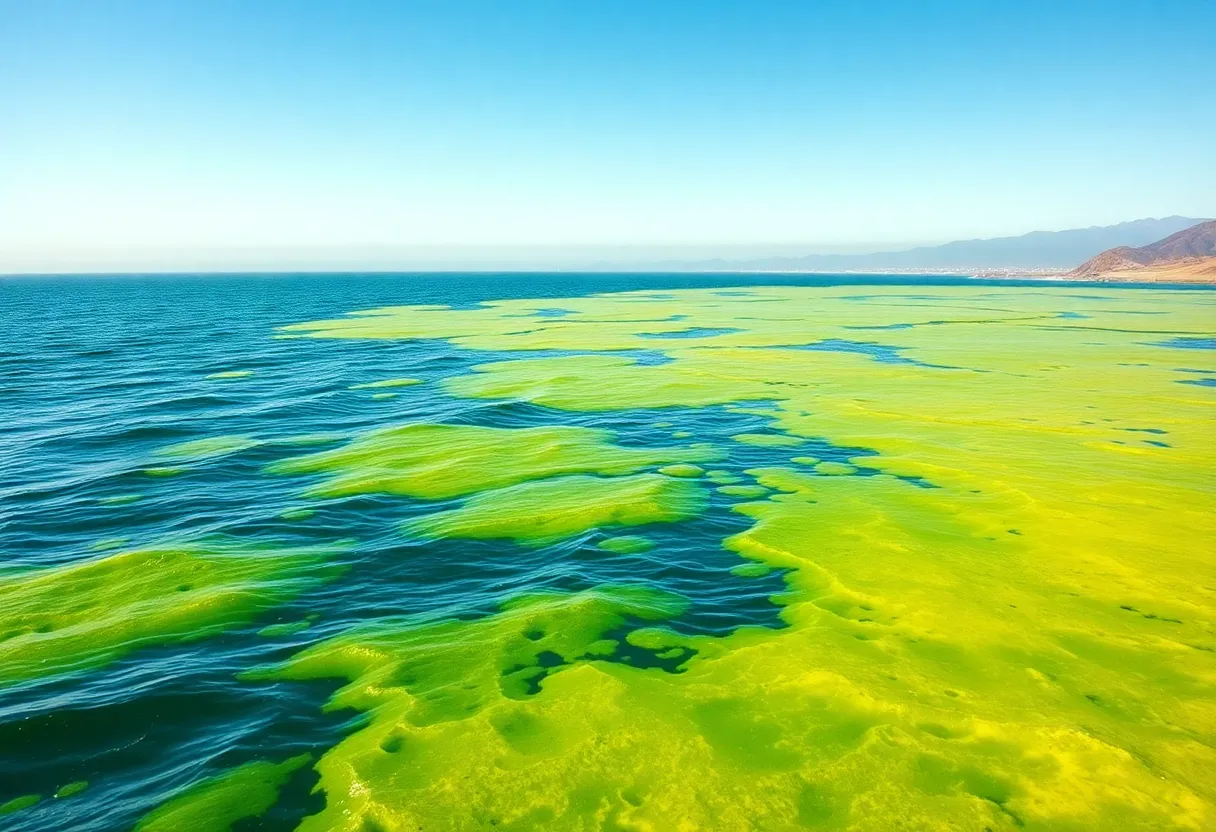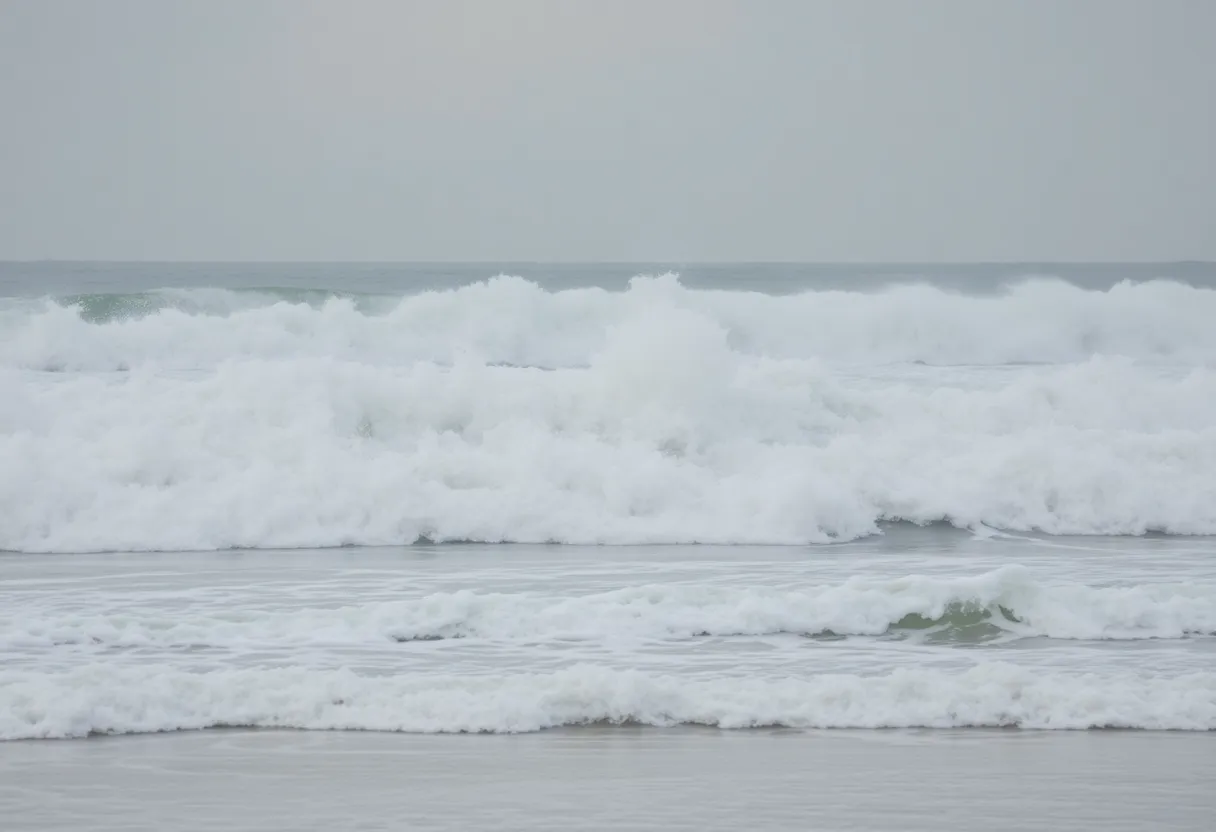News Summary
A recent ecological crisis in Southern California has resulted from toxic algae blooms, leading to the deaths of a humpback whale and a minke whale off Huntington Beach and Long Beach. The phenomenon, driven by climate change and nutrient runoff, threatens not only marine mammals but also seabirds, resulting in increasing mortality rates. Experts warn of the severe implications for ocean ecosystems as investigations continue into the causes of these tragic incidents.
Huntington Beach and Long Beach Reeling from Tragic Marine Deaths
A troubling situation is unfolding off the beautiful coast of Southern California, particularly around Huntington Beach and Long Beach. Two whales have sadly succumbed to a toxic algae bloom that is making waves for all the wrong reasons. This alarming scenario has made headlines following the latest findings from a necropsy conducted on these majestic creatures.
What Happened?
On January 24, a female humpback whale was discovered dead on the shores of Huntington Beach. Later, a subadult minke whale was found stranded on April 6 after showing unusual swimming behavior in early April, near the Port of Long Beach. Researchers have determined that both whales fell victim to domoic acid toxicosis, a dangerous poison produced by harmful algal blooms.
The Bigger Picture: An Ecological Crisis
The sheer scale of this issue is staggering. Thousands of marine animals, including not just whales but also sea lions, common dolphins, and many seabirds, are being adversely affected. The domoic acid outbreak has caused four whales to strand themselves along the coasts of Orange and Los Angeles counties. This year marks the fourth consecutive year that these toxic conditions have occurred, and experts say the current bloom is more severe and has started earlier than usual.
What’s Causing All This?
Many experts are raising alarms about what’s fueling this alarming uptick in toxic algae. Warming ocean conditions, exacerbated by climate change, are leading to more frequent and severe harmful algal blooms, according to surveillance data. To make matters worse, debris from wildfires and fertilizer runoff are thought to be significant contributors to the spread of these toxic algae, wreaking havoc in the ocean.
Marine Mammal Mortality Rates Rising
The implications of domoic acid intoxication are dire. Affected marine mammals struggle to feed themselves effectively, leading to starvation and, ultimately, tragic fatalities. Reports indicate that over 50 dead and dying dolphins washed up along the coast in just a week. This rising number of mortalities among marine mammals is sending shockwaves through the scientific community.
The Birds Are Not Safe Either
It’s not only marine mammals that are in peril. Many seabirds, particularly brown pelicans, are also falling victim to domoic acid poisoning. Reports from wildlife rehabilitation centers suggest that hundreds of seabirds are currently being treated for poisoning, making this year unusually devastating for these avian populations.
Looking Forward
As the Pacific Marine Mammal Center continues to analyze the situation, further necropsy results are pending for two stranded gray whales, while a separate dead humpback whale has washed up in Ventura, potentially linked to the algae toxins. The urgency and scale of this ecological imbalance cannot be overlooked as experts warn of darker days ahead for the overall health of our ocean ecosystems.
In Conclusion
The reality is stark: the toxic algae bloom threatening our marine life is a wake-up call for all of us. As we enjoy Southern California’s stunning coastline, it’s crucial to recognize the fragility of the marine ecosystem. By understanding these environmental challenges, we can hopefully create a better future for the creatures that dwell in our oceans. Let’s hope for improvements as scientists and conservationists navigate the murky waters of this ongoing crisis.
Deeper Dive: News & Info About This Topic
HERE Resources
Alarming Surge in Dolphin Strandings Linked to Toxic Algae Bloom Off Southern California Coast
Huntington Beach Seabird Health Crisis Linked to Algal Bloom
Additional Resources
- ABC News: Toxic Algae Bloom Killing Marine Life in Southern California
- Wikipedia: Toxic Algae
- LAist: Unprecedented Toxic Algae Bloom Killing Southern California Wildlife
- Google Search: Toxic Algae Bloom Southern California
- NBC News: Toxic Algae Bloom Killing Marine Animals in Southern California
- Encyclopedia Britannica: Toxic Algae
- ABC7: Toxic Algae Bloom Killing Dolphins and Other Marine Animals
- Google News: Toxic Algae Bloom Marine Life
- Oceanographic Magazine: US Algal Bloom Death Toll Raises Serious Concern for Ocean Health

Author: STAFF HERE HUNTINGTON BEACH
The Huntington Beach Staff Writer represents the experienced team at HEREHuntingtonBeach.com, your go-to source for actionable local news and information in Huntington Beach, Orange County, and beyond. Specializing in "news you can use," we cover essential topics like product reviews for personal and business needs, local business directories, politics, real estate trends, neighborhood insights, and state news affecting the area—with deep expertise drawn from years of dedicated reporting and strong community input, including local press releases and business updates. We deliver top reporting on high-value events such as the Huntington Beach Surf City USA Marathon, the U.S. Open of Surfing, Fourth of July celebrations at the Huntington Beach Pier, and community festivals at Huntington Beach Central Park. Our coverage extends to key organizations like the Huntington Beach Chamber of Commerce and Visit Huntington Beach, plus leading businesses in retail, hospitality, and outdoor recreation that drive the local economy. As part of the broader HERE network, including HEREAnaheim.com, HERECostaMesa.com, HERESantaAna.com, and HERELosAngeles.com, we provide comprehensive, credible insights into Southern California's dynamic landscape.





